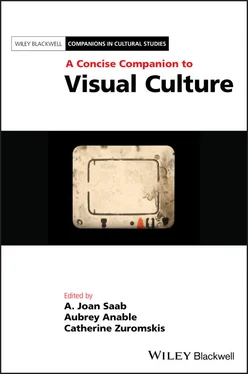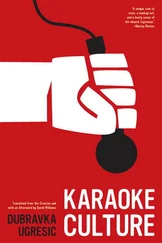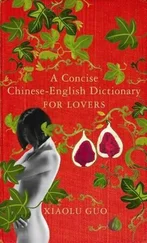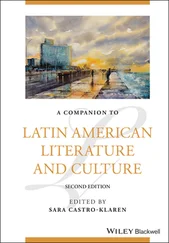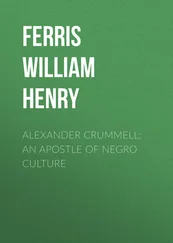For Mulvey, this “find” disrupts the film’s texture, explodes it into context. “Inscribed onto the screen but only subliminally visible,” she writes, “the fleeting presence of the extras relates to Annie’s invisibility as the worker on whom Lora’s visibility depends.” “With the image halted,” she continues, “the appearance of the black figures on the screen takes on added power and weightiness, standing in for and conjuring up the mass of ‘coloured people’ rendered invisible by racism and oppression very particularly by Hollywood’s culture and representation” (160).
She finds this detail and its entailments crucial to the film’s historical force because, while “the depiction of the ‘race problem’ in Imitation of Life still belongs firmly to a pre‐1960s, pre‐Malcolm X, pre‐Black Power era, [it also] belongs to that style of film‐making in which a social ‘unconscious’ is both acknowledged and displaced in which melodrama flourished.” Mulvey’s conclusion makes a broader claim, however: “Now, to look at films such as those made by Douglas Sirk is to have the impression of looking into history,” as “close readings inevitably lead to questions of context as well as text” (160). So the restoration of the spectral qualities of these images, their status as archives, brings history into our readings as material and matter.
1 Alexander, Michelle. 2020. “Injustice on Repeat.” New York Times (Sunday Book Review), January 19, pp. 1, 6–7.
2 Cherchi‐Usai, Paolo. 2001. The Death of Cinema: History, Memory, and the Digital Dark Age. London: BFI Publishing.
3 Crimp, Douglas. 2016. Before Pictures. Chicago, IL / Brooklyn: University of Chicago Press / Dancing Foxes Press.
4 English, Darby. 2007. How to See a Work of Art in Total Darkness. Cambridge, MA: MIT Press.
5 Holly, Michael Ann. 2013. The Melancholy Art. Princeton, NJ: Princeton University Press.
6 Mitchell, W. J. T. 2005. What Do Pictures Want? The Lives and Loves of Images. Chicago, IL: University of Chicago Press.
7 Mitchell, W. J. T. 2013. “There Are No Visual Media.” In The Visual Culture Reader, edited by Nicholas Mirzoeff, 7–13. London: Routledge.
8 Mulvey, Laura. 1989. Visual and Other Pleasures. Bloomington: Indiana University Press.
9 Mulvey, Laura. 2006. Death 24× a Second: Stillness and the Moving Image. London: Reaktion Books.
10 Rodowick, D. N. 2014. Elegy for Theory. Cambridge, MA: Harvard University Press.
11 Russell, Catherine. 2018. Archivology: Walter Benjamin and Archival Film Practices. Durham, NC: Duke University Press.
12 Steedman, Carolyn. 2002. Dust: The Archive and Cultural History. New Brunswick, NJ: Rutgers University Press.
PART II Key Concepts
A. Joan Saab
One of the standard critiques of visual culture is that it abandons the historical. Indeed, the very first question in the now notorious October “Visual Culture Questionnaire” of 1996 passively asserts:
It has been suggested that the interdisciplinary project of “visual culture” is no longer organized on the model of history (as were the disciplines of art history, architectural history, film history, etc.) but on the model of anthropology. Hence, it is argued by some that visual culture is in an eccentric (even, at times, antagonistic) position with regard to the “new art history” with its social–historical and semiotic imperatives and models of “context” and “text.” (The Editors 1996, 25)
In her response to the survey, Michael Ann Holly called this “an unforgivable exaggeration of the state of affairs.” Art history, she writes, “has traditionally constrained us to think in terms of linear time, because time, like the arches of heaven, appears to offer us the reassurance of a regularized and harmonic aesthetic. Representing times past instead through the chaos of overlapping and contested spaces provides the opportunity for undermining that confidence” (Holly 1996, 40). Similarly, in his reply, Martin Jay addresses the misconception that “an anthropological culture concept … brings with it an indifference to historical change, preferring to discern the same cluster of signifying mechanisms no matter the context, in the way that structuralism during its heyday sought universal patterns across many different divides” (Jay 1996, 43). And David Rodowick pointedly asks: “Are the old disciplines dissolving because of a failure to conceptualize new phenomena,” or “is disciplinarity under suspicion because of an internal critical and philosophical pressure?” (Rodowick 1996, 59–60). These questions, we believe, still hold. Rather than equate history with a fixed and canonical past buttressed by the arches of heaven, as it were, we see it as a mode of thinking—across time and artifacts, archives, and ephemera.
The chapters in this section examine the role of history, broadly conceived, across the domain of visual culture studies. In his entry on temporality, for example, Joel Burges investigates the idea of televisual time through the ordered grid of the weekly TV guide schedule and the narrative frame of the sitcom. Marquard Smith weaves personal memories—his familial history of the Shoah—alongside his own experience of contemporary moments of silence in his mediation on questions of what we see and what we hide when we “observe.” Jane Blocker in her chapter on the archive asks us to push against the limits of the idea of the museum or archive, by crossing media boundaries in order to understand the archive’s strange ontology. Finally, Kate Palmer Albers interrogates the ways in which modes of intentional ephemerality and live photography offer viewers the possibility of control that may counter what she calls “the oppressive voraciousness of the online and emerging automated systems of images” (p. 139).
For all these authors, just like for us, history provides more than just a temporal frame. It also presents opportunities for contemporary intervention. Like Holly, we see richness in chaos and we understand the past as always changing—in ways that are indeed eccentric, at times antagonistic, yet always engaging and full of possibility.
1 The Editors. 1996. “Visual Culture Questionnaire.” October 77: 25–70.
2 Holly, Michael Ann. 1996. “Saints and Sinners,” pp. 39–41 in “Visual Culture Questionnaire.” October 77: 25–70.
3 Jay, Martin. 1996. “Visual Culture and Its Vicissitudes,” pp. 42–4 in “Visual Culture Questionnaire.” October 77: 25–70.
4 Rodowick, David. 1996. “Paradoxes of the Visual,” pp. 59–62 in “Visual Culture Questionnaire.” October 77: 25–70.
Jane Blocker
Down. Down. Down. Down. Down. The archive produces a vertiginous spatial orientation, a relentless, suffocating, and overwhelming accrual that simultaneously requires and prevents searching; a memorialization that engulfs memory. Dominated by the habit of imbrication, the archive’s contents tend to pile and build up organically, like the iceberg’s layers of snow deeply falling year upon year, only to compress and crush under their own massive weight, or the strata of earth and stone deposited over millennia, or the mineral‐laden water that, drip by heavy drip, forms a stalactite. It beckons an archaeology, a digging that, layer upon layer, seeks order and origin—that which is imagined to lie at the bottom of things.
The archaeologist—or, more properly for our purposes, the historian—is the subject for whom the archive is an archive, and not simply an iceberg. “Order,” as theorist Michel Foucault (1970, xx) writes, “is, at one and the same time, that which is given in things as their inner law, the hidden network that determines the way they confront one another, and also that which has no existence except in the grid created by a glance.” By this he means that a requisite feature of the archive is the subject who stands outside it, who gives it order through her grid‐creating glance, gets to its bottom, and takes meaning from it (16). The historian believes fervently in the inner law of the archive’s contents, in the authenticity and evidentiary value of its accumulated things, in the self‐evident “pastness” exhibited in the patina of its material remains, in the inevitable linear chronology that these things manifest and into which they may be confidently placed.
Читать дальше
